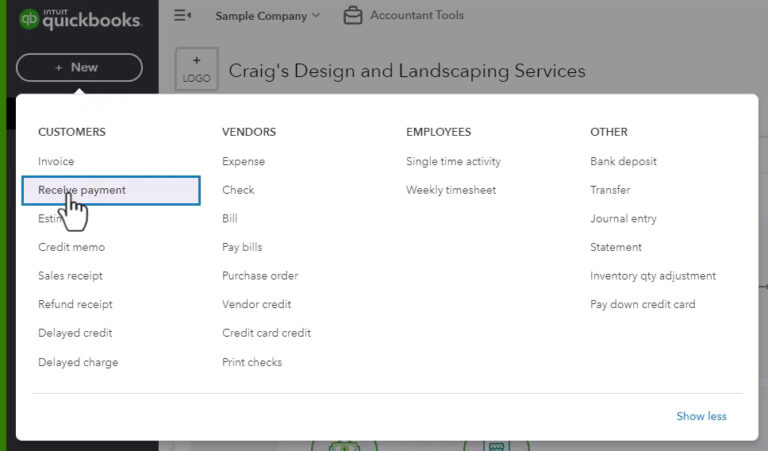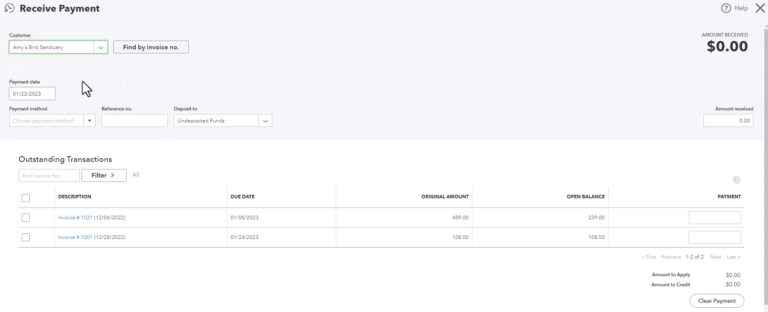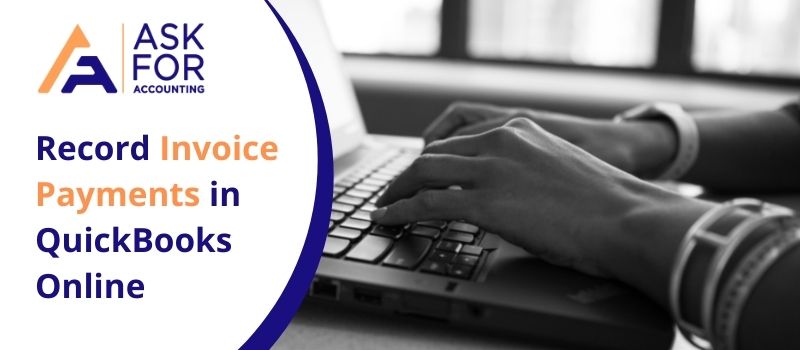Here you can follow the mentioned steps to record invoice payments in QuickBooks Online. This blog guides you through the process of making invoice payments using step-by-step instructions and provides solutions to all the challenges that you may face while keeping a record of invoice payments in QuickBooks Online.
So let’s get started
Recording payments made by your customers is one of the most essential tasks in bookkeeping so that your financial transactions remain organized and up-to-date. Even more essential is that it is done as soon as an invoice payment is made and accurately.
Why it is Essential for Your Business to Record Sales Transactions?
- By recording and categorizing the payments correctly, you can ensure that your accounts are balanced.
- You know whether the payments have been made by cheque, credit card, Electronic Funds Transfer, or POS systems like Square, PayPal, Paytm, etc.
- Recording the payment in QuickBooks ensures that the invoice is closed and is not shown as unpaid on your reports.
- Not entering customer payments and deposits correctly results in a miscalculation of your income and your bank account balance.
Step by Steps Guide to Record Invoices Payments in QuickBooks Online
You can either provide a sales receipt to your customer when they complete a payment for a product or service or send them an invoice if the customer opts to pay you later. Let’s see how to record invoice payments in QuickBooks Online.
For A Single Invoice
- Click New
- Choose the Receive Payment option.

- Select the customer’s name from the Customer drop-down.
- Select the Payment method option under the Payment method menu.
- From the Deposit drop-down, choose the account in which you want the payment to be transferred.
- Select the checkbox for the invoice in the Outstanding Transactions section.

- Select Save and Close.
For Partial Payment in an invoice
- Click New
- Choose Receive Payment.
- Select the name of the customer from the Customer dropdown.
- Click on Payment Method from the Payment Method dropdown.
- Select the account in which the payment would be transferred from the Deposit to dropdown.
- Select the checkbox of your invoice in the Outstanding Transactions section.
- Enter the amount paid by your customer.
- Select Save and Close.
For Payments made With a Cheque
- Select Quick Create.
- Click on Receive Payment.
- Enter details like the customer’s name. Payment date and method, reference no. etc, the amount of the cheque, etc.
- In the deposit to section, select Undeposited Funds and click the check-boxes for the appropriate customer invoices
- Enter the Amount to Apply.
- Click Save and Close.
For Entering Payments made through Electronic Funds
- From the Quick Create Menu, click on Receive Payment.
- Choose the customer from the list or manually enter the customer’s name.
- Enter the Payment date i. e the date on which the cheque was received.
- In the Deposit to section, select the account that received the funds.
- Enter the amount that you received from your customer
- Verify that the amount in Amount to Play is the same as the amount received by the customer.
- Click Save and Close or Save and New.
For Payments Made Through Credit Cards
- Click on the Customer menu and select Receive Payments.
- Choose the Learn About Credit Card Processing option and log in with your account username and password.
- Click the Credit Card option as your payment option
- Enter your customer’s Credit Card number.
- You can also swipe the card on your Credit Card machine and QuickBooks will automatically detect the details.
For Payments made Through Bank Deposits
- From the Quick Create menu, select Bank Deposit.
- Select the bank accounts where the cheques will be deposited.
- Enter the date on which the cheques were deposited.
- In the Select Existing Payments section, click the check boxes next to the cheques.
- Click Save and Close or Save and New.
Now that you’ve gone through the above steps, it will not be difficult for you to record invoice payments through various modes in QuickBooks.
Recording invoice payments in QuickBooks, when done correctly and after proper training, can have long-term positive benefits for your business. It can save you from all the hassles, especially during monthly/quarterly closings or while preparing reports. Through organized records of payments, businesses can place their customers in good standing and can be transparent to the customers as well as to the regulatory bodies.
Frequently Asked Questions
My Bank Grouped Multiple Payments into a Single Record. How to Enter Them in QuickBooks Online?
● You can deposit such payments to the Undeposited Funds account in QuickBooks where multiple records are clubbed together.
How can I Check my Undeposited Funds Account?
● Go to the Accounting menu > Click Chart of Accounts > Choose Undeposited Funds accounts from the list > Click on Account History.
Can I Record Another Invoice Payment in QuickBooks without Closing the Window?
● Simply click on the Save and New option instead of Save to record another invoice payment.

